Hello,
In this post we”ll be making a Six wheel drive all terrain vehicle (ATV). These are rare and hence expensive robots (at least in India). Dagu manufactures a similar 6WD chassis but its way too expensive (Rs 20000 / $ 250). So I decided to make a cheap Six Wheel drive(6WD) – All terrain vehicle(ATV) chassis out of aluminium and steel and then control it with an android mobile phone using HC-05 Bluetooth module. If you don’t know how to use a HC-05 bluetooth module click here for the guidelines.
Of course one can make various sorts of autonomous robots with this chassis using different control systems. I will be using an arduino Mega 2560 as the brains of this robot. Alright, so lets go ahead talk about various steps involved in making such a vehicle.
Design:
People think that while building a robot electronics and coding are the two main steps. But its not true, in fact design is the real mother-ship. If you got that part right it will reflect in the rest of the system. A good design could provide better efficiency, low cost, good looks etc. The elegant design of this chassis is the best bit of this project.
Now, the first question that strikes is that why a six wheel drive for an ATV? As the name suggests a six wheel drive (6WD) means a drive system in which all the six wheels are able to move independently. Well to be honest there is nothing special in 6WD unless you provide it with a real nice suspension system. In this project I have chosen to go with individual tyre suspension as it gives better traction and more torque on an uneven surface. This design is inspired by six legged insects, although it doesn’t has legs but it sure has similar flexibility.
The Chassis:
There are many other options available in the market if you want a six wheel drive chassis. The reason why this product stands out is that its cost effective. I spent Rs 2000 (approx. $33) on this project.
Material/Parts required are:
- Aluminium sheet.
- 12 L shaped motor brackets (steel).
- Six high torque motors.
- Six high traction wheels (10 cm diameter).
- PVC pipe (diameter just greater than motors).
- Screws and nuts.
- A hammer and a nail (for making holes in aluminium sheet).
- Nylon ties
After having all the required material here is what you need to do next:
- Cut the Aluminum sheet into 32 by 12 cm.
- Make six pieces of PVC pipe of length just greater than that of motors.
- Make four perpendicular diametrically opposite holes in the PVC pipe.
- Fit motors into PVC pipe such that holes are on the inner side.
- Divide the aluminium sheet into 3 sections by marking with a sketch pen.
- Place two L shaped motor brackets on Al sheet and mark positions such that motor just fits in.
- Make holes on these positions using a hammer and a nail.
- Affix the brackets using screws and nuts.
- Screw nuts into bracket and holes on PVC to affix motors.
- Tie two opposite motors with nylon ties.
Adding a control System:


Now that we have build the chassis, we have to decide how we want it to work. In general, there are two control systems.
- AI-Automation
- Remote control
Automating a robot is a challenge. It is definitely difficult to implement than remote control. In this project we are keeping both options open by installing an arduino for automation. This arduino is also connected to a Bluetooth module (See PCB) which can be used for remote control. In remote control the actual brain behind movement of robot is a human brain, now imagine if a human brain is aided by a little touch of automation (example: automation an help in object contact avoidance).
I controlled the ATV through an android device via bluetooth. There are a lot of apps available on playstore for controlling arduino via bluetooth. I used Arduino BT Joystick.
Obviously, there is no limit to what you can do with this chassis. So if you got some interesting ideas please share them with me in comments. Thank you for reading.

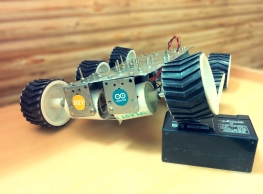
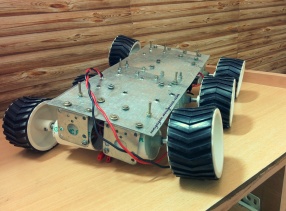
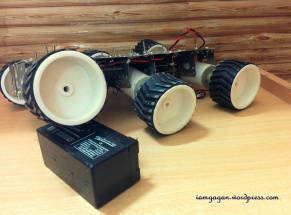
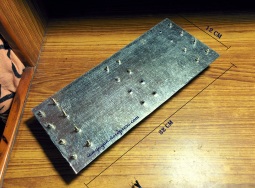
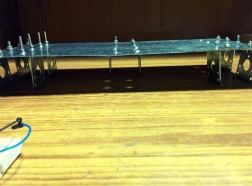
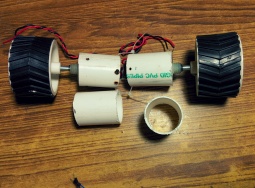
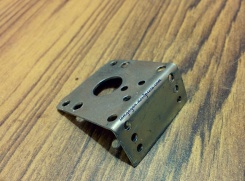
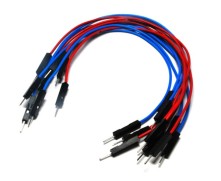
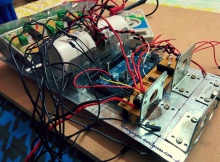
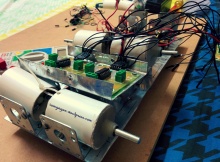
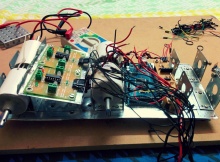
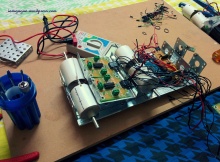
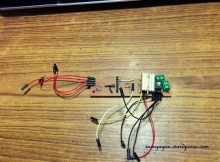
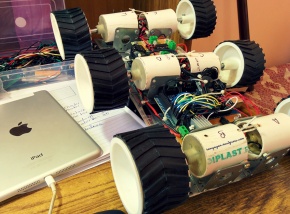
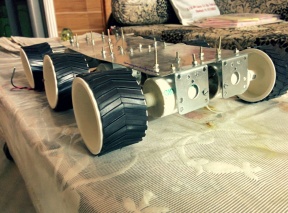
Hi.
For the whole day today I was sitting at my PC, browsing the net to find the robot chassis I want to build. I was not looking for ready-made solution, I was rather looking for something cool for a base for my project. Thank you for sharing your work – it is GREAT and it looks like I will try to use it, or at least some of its ideas for my project. THANKS!
thank you.
Please subscribe for upcoming content.
Do you have any wideos of this robot driving around?
Yes. I will upload them ASAP and link them to post.
just scroll down a little on this page:
http://www.instructables.com/id/Six-wheeled-All-Terrain-Vehicle-6WD/